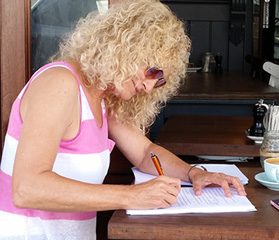

Your story is polished. Before you start on your storyboard, the next major decision is what trim size to choose for your book. Here’s why?
I read a story on a forum where a person had spent a ton of money working with a graphic designer to self-publish their children’s picture book. When it came time to upload the cover and internal book to Amazon, it was rejected because it was not an Amazon standard trim size.
The devastated author shared her wisdom to help others not fall into the trap of working with a professional that did not know about industry standards.
If you are self-publishing, you are the boss and the client. As a client prior to working with an illustrator or graphic designer, take some time and do your own research on page count, trim sizes, and illustration formats. Your designer team may also offer suggestions, but the trim size will need to align with how you will print your book.
There are standard trim sizes with a common page count of 32 pages. Authors can make decisions on page count and trim size based on cost-effective printing.
While researching for trim sizes consider these suggestions:
Trim sizes that are available by IngramSpark and Amazon’s KDP Print which has a similar list.
Storyboards
Once you have decided on your trim size, the storyboard is a perfect tool to plan and prepare for your book. Use the storyboard as a visual tool to design the directional layout of your picture book.
Consider these suggestions with Storyboards:
This part of the process is still in the infant stage of creating your book and it’s where you will work with your illustrator and graphic designer and give them room to use their creative genius.
When choosing a book team in self-publishing, it’s important to research, read testimonies, ask for examples of their work, and discuss copyright, pricing, and time frames. And ask for a proposal with all this information. This is your storybook that you are going to present to the world with your name on the front cover, alongside the illustrator. Be proud of what you are creating for kids to read.
And, while there are expectations of e-books dominating the book industry when it comes to children’s stories, don’t discount the power of printed books. Those young consumers enjoy the look and feel of beautifully presented picture books and tuck them under their pillows or pop them in their schools’ bags to share with their kindy mates.
References
Design a children’s picture book

Hello and welcome to my blog.
I love writing and sharing my journey as an author and encourage others to write their stories too.